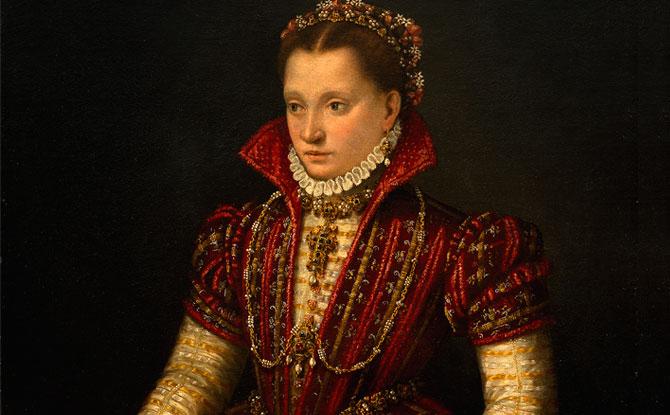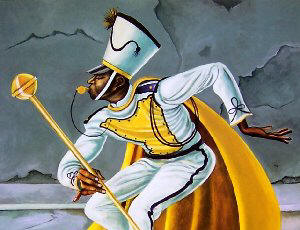
by Sandy | Mar 1, 2025 | Art, Blogroll, Museums
As a celebration of Women’s History Month, March 2025, go see what’s on view at the “National Museum of Women in the Arts“, or NMWA, in D.C.
It is one of many museums in the DC area, but this one is special because it “is the only major museum in the world solely dedicated to recognizing women’s creative contributions.”
Created in 1987,with more “than 4,000 works, NMWA’s wide-ranging collection provides a comprehensive survey of art by women from the 16th century to the present, with new acquisitions added regularly”.
National Museum of Women in the Arts
New York Avenue and 13th Street, NW, DC
*Women’s History Month is celebrated each March and the 2025 theme of “Moving Forward Together! Women Educating and Inspiring Generations” resonates deeply …
~~~ *** ~~~
***
by Sandy | Feb 17, 2025 | Blogroll, Exhibits, Galleries

“I really have this deep belief that images can change the world.”
Amy Sherald, the artist known for her Michelle Obama portrait, has over 40 works at the San Francisco Museum of Modern Art in an exhibition called – “American Sublime”
“Sherald’s artworks convey the quiet power in everyday people and invite viewers to participate in a more complex debate about accepted notions of American identity.”
Amy Sherald: American Sublime
San Francisco Museum of Modern Art
151 Third Street, San Francisco, CA
(Image: “For Love, and for Country”, 1922 Amy Sherald)
by Sandy | Jan 15, 2025 | Artist, Arts, Entertainment and Music, Blogroll, Culture, Exhibits, Learning, Live Performance

10th Anniversary * February 7 – 28, 2025
Vision & Sound creates an educational experience and environment that broadens the understanding and appreciation of African American visual and performing arts for multigenerational and multicultural audiences. We strive to build supportive relationships to encourage cultural equity throughout Arizona and beyond – recognizing that professional American artists of African descent are too often overlooked.
Opening Reception & Celebrate Sedona
Friday, February 7, 2025, 4-6 pm
In Sedona Arts Center’s Special Exhibitions Gallery & Upper Parking Lot
15 Art Barn Road, Sedona, Arizona 86336
Free event parking is located behind Sedona Arts Center’s Art Barn.
Featured Artists:
Anjola Ayodele
Patricia Bohannon
Dorrell Bradford
Antoinette Cauley
Jacqueline Chanda
Michael Cunningham
Lizz Denneau
Amber Doe
Debra Edgerton
Chas Frisco
Isse Maloi
Bob Martin
Philip Gabriel Steverson
George Welch
Shoreigh Williams
~Schedule of Events and Exhibitions~
Presented by Sedona Arts Center in partnership with the ASU Center for the Study of Race & Democracy
Celebrate Black History Month and enjoy artist demonstrations, food, wine, beer and music by the Tommy Dukes Band.
Friday, February 7-28, 2025
15 Art Barn Road, Sedona, Arizona 86336
The exhibition is on view in the Special Exhibitions Gallery.
Free event parking is located behind Sedona Arts Center’s Art Barn.
Featuring: Patricia Bohannon, Dorrell Bradford, Antoinette Cauley, Jacqueline Chanda, Michael Cunningham, Amber Doe, Lizz Denneau, Debra Edgerton, Chas Frisco, Isse Maloi, Bob Martin, Philip Gabriel Steverson, George Welch, and Shoreigh Williams
Vision & Sound Symposium
Saturday, February 8, 2025, 8:30 am-5 pm
Sedona Arts Center, 15 Art Barn Road, Sedona, Arizona 86336
Featuring keynote speaker and renowned dancer, choreographer and scholar LaTasha Barnes
as well as panel discussions, performances, receptions and reflections.
Free event parking is located behind Sedona Arts Center’s Art Barn.
Global Sounds Concert
Wednesday, February 12, 2025, 7-8:30 pm
Free tickets
Peoria Center for the Performing Arts, 10580 N 83rd Dr, Peoria, Arizona 85345
Enjoy a special concert by Gabriel Bey and Friends featuring Jazz, R&B and Funk.
Goodyear Jazz in the Park
Saturday, February 15, 2025, 5-8 pm
Goodyear Civic Center, 1900 N. Civic Square, Goodyear, Arizona 85395
Celebrate Black History month and enjoy an evening of jazz.
Goodyear Teen Workshop
Wednesday, February 19, 2025, 3-5 pm
Fabric Tales – A workshop driven towards spontaneous creativity and instinctive imagination utilizing textiles.
During this workshop, participants will brainstorm, visualize, then create collage style artworks depicting characters and scenes from their imaginations with an array of fabrics provided by the artist. From scenic views of the mountains to abstract color compositions, each piece will be unique to the artist’s hand.
Participants will have the opportunity to work with pre-cut materials to create their own character, or roam freely by rummaging through curated fabrics to bring their imagined pieces to life. Click here to sign up.
Goodyear Recreation Campus, 420 S Estrella Parkway, Goodyear, Arizona 85338
(ages 12-17) with Philip Gabriel Steverson
Artist Demo with Jacqueline Chanda
Thursday, February 20, 2025, 4-6 pm
Tolleson Public Library Gallery, 9055 W. Van Buren Street, Tolleson, Arizona 85353
Visit us at the Tolleson Public Library at 3 pm on Thursday, February 20 for catered snacks and a demo from featured Vision and Sound exhibit artist Jacqueline Chanda.
Peoria Arts & Cultural Festival
Saturday, March 1, 2024, 9 am-3 pm
Old Town Peoria (Peoria/Grand Avenues)
Enjoy artist demonstrations and workshops by select artists
Exhibitions in Sedona, Goodyear, Peoria & Tolleson
Peoria Main Library
Showing through March 28, 2025
8463 W. Monroe Street, Peoria, Arizona 85345
Featuring: Anjola Ayodele, Jacqueline Chanda, Isse Maloi, Bob Martin, Philip Gabriel Steverson, and Shoreigh Williams
Sunrise Mountain Library
Showing through March 28, 2025
21109 N 98th Ave, Peoria, Arizona 85382
Featuring: Michael Cunningham, Jacqueline Chanda, and Dorrell Bradford
Tolleson Public Library
Showing through March 29, 2025
9055 W. Van Buren Street, Tolleson, Arizona 85353
Featuring: Anjola Ayodele, Patricia Bohannon, Dorrell Bradford, Michael Cunningham, Jacqueline Chanda,
Lizz Denneau, Isse Maloi, Bob Martin, Philip Gabriel Steverson, and Shoreigh Williams
Georgia T. Lord Library
January 30-March 30, 2025
Featuring: Dorrell Bradford, Jacqueline Chanda, Isse Maloi, Bob Martin, Philip Gabriel Steverson, and Shoreigh Williams
1900 N. Civic Square, Goodyear, Arizona 85395
by Sandy | Jan 1, 2025 | Art, Blogroll, Exhibits
 “Museum of the African Diaspora is proud to present “Meet Us Quickly: Painting for Justice from Prison”, an exhibition of the work of twelve artists incarcerated at San Quentin State Prison…”
“Museum of the African Diaspora is proud to present “Meet Us Quickly: Painting for Justice from Prison”, an exhibition of the work of twelve artists incarcerated at San Quentin State Prison…”
They have also provided notes about themselves and their work.
Meet Us Quickly: Painting for Justice from Prison
MoAD – The Museum of the African Diaspora
685 Mission Street San Francisco, CA
(Image: Gentle Giants, Antwan “Banks” Williams)
*Originally posted May 2023*
~~**~~**
by Sandy | Nov 21, 2024 | Art, Arts, Entertainment and Music, Blogroll, Exhibits, Museums

“The Whitney Museum of American Art … is the first large-scale museum exhibition to celebrate the life, dances, influences, and enduring legacy of visionary artist and choreographer Alvin Ailey (b. 1931, Rogers, Texas; d. 1989, New York, New York).”
The presentation, “Edges of Ailey consists of an immersive exhibition in the Museum’s 18,000 square-foot fifth-floor galleries—featuring works by more than eighty artists and revelatory archival material—and an ambitious suite of performances in the Museum’s third-floor theater, including AILEY in residence for one week each month during the exhibition.”
A few of the artists included: Jean Michel-Basquiat, Kara Walker, Elizabeth Catlett, Mickalene Thomas, Lynette Yiadom-Boakye
Edges of Ailey
Through February 9, 2025.
Whitney Museum of American Art
99 Gansevoort Street, NYC
(Carmen de Lavallade, by Geoffrey Holder 1976)
~~~
by Sandy | Sep 3, 2024 | Art, Exhibits, Museums

The Boston Museum of Fine Art offers “Dalí: Disruption and Devotion”. The presentation of 30 painting and prints by Dali (1904–1989) and other artists like El Greco, Orazio Gentileschi, and Velázquez, enables “visitors to experience a unique take on one of the most celebrated avant-garde artists of the 20th century.”
“Dalí: Disruption and Devotion”
Museum of Fine Arts Boston
Until December 1, 2024

by Sandy | Aug 26, 2024 | Artist, Blogroll
Ok! It’s that time of year again. Noticed so many Instagram posts announcing college football events. Tons of clips of HBCU marching groups, with their fancy Drum Majors, big bands and cheerful Cheer leaders. All the best to them!
Watching reminds me of the image above. Can’t you just hear his whistle, the brass section, the drums? Strut on.
I Love it!
A former football player turned artist, Mr Barnes’ work, filled with sports figures and images of everyday people, is known for his use of bright color and elongated figures.
Ernie Barnes, 1939 – 2009, “Drum Major”.
~~~***~~~
[ad#review-2a]
by Sandy | Aug 8, 2024 | Art, Blogroll, Exhibits, Museums

“This exhibition is the first major survey of Joan Brown (American, 1938–1990) in over 20 years, and offers a compelling look at the prolific career of a painter known for her large-scale, high-key portraits of family, animals, and herself.”
Joan Brown
Carnegie Museum of Art

by Sandy | Jul 30, 2024 | Art, Artist, Blogroll, dvd, TV
(Originally posted 3/5/12)
A PBS program that I enjoyed is now on DVD – “Simon Schama’s – Power of Art”. Relaxed and informative, it even includes some personal tidbits about one of my favorite artists. Michelangelo Merisi da Caravaggio was gloriously talented, but he was also a youthful offender – violent and incorrigible. Not a cute “Denis the Menace” type, (he murdered a rival) but, as Schama labels him – a thug. I was shocked! Does his anger and madness show in his art? Maybe.
Considered part of the early Italian Baroque style of painting, his work, perhaps as a way of seeking redemption, focused on biblical themes – but, if you look at the faces, you will notice that these are no cherubs or saints, his paintings are inhabited by the people that he found in the local taverns with all their blemishes and wrinkles. I’ve found his work to be vibrant and alive regardless of its theme – whether card players or John the Baptist – full of energy, often full of violence, always very up close and in your face.
Schama narrates the hour and takes a gossipy, anecdotal look at the short life of Michelangelo Caravaggio, (1571 – 1610), and includes some re enactments to give background as to why/how certain paintings were created – like “Calling of Saint Matthew” and his “David with the Head of Goliath”.
BTW – Caravaggio was like Alfred Hitchcock, who always had a walk on or walkthrough in his movies and TV shows – the artist liked to paint himself in the middle of his scenes – with a table of card sharks, with a group of musicians and most notably, he serves himself up as the “Head of Goliath”.
The PBS series included the same 8 artists that are highlighted in Mr. Schama’s book of the same name, “Power of Art”: Caravaggio, Rembrandt, David, Turner, Van Gogh, Picasso, Rothko and Bernini.
(Image: David with the Head of Goliath, c. 1609. Oil on panel)
~~~ *** ~~~
by Sandy | Jul 14, 2024 | Art, Blogroll, Culture, Exhibits, Museums

A current presentation at The MET, Harlem Renaissance and Transatlantic Modernism, is the “first art museum survey of the subject in New York City since 1987, the exhibition establishes the Harlem Renaissance and its radically new development of the modern Black subject as central to the development of international modern art.”
“Featured artists include Charles Alston, Aaron Douglas, Meta Warrick Fuller, William H. Johnson, Archibald Motley, Winold Reiss, Augusta Savage, James Van Der Zee, and Laura Wheeler Waring.”
The Harlem Renaissance and Transatlantic Modernism
*~* Until July 28, 2024 *~*
The Metropolitan Museum of Art
5th Ave and 86 Street, NYC
~*~*~*










